
Ex: http://arretsurinfo.ch
Après l’offensive de propagande médiatique du weekend dernier appelant à armer le gouvernement ukrainien dans une opération punitive contre les indépendantistes de l’est du pays, relayée notamment par les quotidiens Libération, Le Figaro, et le Nouvel Observateur, c’est autour du Monde de répondre à la voix de son maître.
Dans un éditorial paru le 3 février sous le titre « Faut-il armer l’Ukraine ? » le quotidien Le Monde milite en effet pour un soutien armé direct à l’armée ukrainienne. Cet article, comme les précédents, est basé sur une accumulation de mensonges. On peut d’abord lire :
« Chaque jour qui passe, les milices ukrainiennes pro-russes, encadrées sur le terrain par l’armée russe, dépècent un peu plus ce malheureux pays qu’est l’Ukraine. Elles accroissent le pseudo-Etat qu’elles se sont taillé dans l’est du pays. Sauf à se payer de mots, il faut décrire cette réalité pour ce qu’elle est : un pays, la Russie, en agresse un autre, l’Ukraine – par la guerre. Ce n’est pas une guerre froide, c’est une guerre chaude, et qui fait essentiellement des morts parmi les civils. »
Le fait que l’armée russe combatte sur le terrain aux côtés des indépendantistes et qui sous-tend les accusations colportées par les médias occidentaux d’une « agression russe » contre l’Ukraine, a pourtant été démentie ces derniers jours par le chef de l’état-major ukrainien en personne, Viktor Muzhenko, qui a déclaré lors d’un point presse :
« A ce jour nous n’avons que des faits de cas de participation individuelle des citoyens russes dans les actions militaires des groupes armés illégaux. Des actions militaires contre les unités de l’armée russe, nous n’en menons pas non plus à ce jour. »
Le Monde est factuel sur les morts, essentiellement civils, du conflit. Mais ce qu’il omet de préciser, c’est que ces victimes civiles sont des citoyens russophones de l’est du pays qui tombent sous les exactions des bataillons néonazis de la garde nationale ukrainienne, ceux-là même que Le Monde et les médias occidentaux appellent à armer. Pour mémoire, un charnier de 400 corps a été découvert fin septembre 2014 par les forces Armées de Novorossia au nord de Donetsk sur les anciennes positions tenues par la garde nationale ukrainienne.
Le bureau des Nations-Unies chargé de la coordination des affaires humanitaires évaluait en décembre dernier les victimes civiles à plus de 4600 et les personnes déplacées, qui ont essentiellement trouvé refuge en Russie, à plus d’un million.
On retrouve également dans l’article du Monde la fable de « l’annexion » de la Crimée :
« Celles-ci [les sanctions] ont eu un impact certain sur l’économie russe, mais pas au point de dissuader M. Poutine d’amputer l’Ukraine de sa partie orientale après avoir annexé, en 2014, l’ensemble de la Crimée. »
Rappelons donc une fois encore pour les journalistes du Monde que les habitants de Crimée se sont prononcés par référendum pour un rattachement à la Russie. L’annexion par voie référendaire constitue certes un nouveau concept journalistique audacieux, mais cela ne lui donne pas pour autant une quelconque réalité.
« Le Kremlin viole un cessez-le-feu conclu en septembre 2014. Il se refuse à toute négociation sérieuse. Ces dernières semaines, des centaines de chars, pièces d’artillerie autotractées, blindés divers, porte-missiles, stations radars ont été livrés aux milices. Inévitablement, le ton monte aux Etats-Unis. Des voix de plus en plus nombreuses, y compris dans les milieux officiels, se prononcent en faveur d’une livraison massive d’armes défensives à Kiev. »

Les journalistes du Monde pourront se référer à ce sujet à mon précédent article listant les violations du cessez-le-feu de la part de l’armée ukrainienne, et plus particulièrement les bataillons de la garde nationale, durant l’automne 2014 : « Ukraine: l’armée continue son offensive avec le soutien des États-Unis, en violation des accords de Minsk »
Ils y apprendront notamment que les observateurs de l’OSCE présents sur le terrain ont constaté début novembre 2014 plus de « 2400 violations du cessez-le-feu par des groupes d’activistes », les « groupes d’activistes » désignant principalement les bataillons de la garde nationale ukrainienne.
Le 27 janvier, la correspondante du magazine russe Expert, Marina Akhmedova, interviewait un officier de l’armée régulière ukrainienne près de Slaviansk, sous couvert d’anonymat, voici ce qu’il déclarait :
« […] il y a beaucoup d’unités qui ne respectent tout simplement pas le haut commandement. Il n’y a pas de structure claire. Il y a seulement le ministère de l’Intérieur avec ses propres bataillons de volontaires qui, selon ses dires, est formé par le ministère même. » Le président russe Vladimir Poutine parlait ainsi à propos des bataillons de volontaires de la garde nationale, financés en grande partie par l’oligarque israélo-ukrainien Ihor Kolmoyski, d’une « légion étrangère de l’OTAN ».
Quant aux accusations de livraison de matériel lourd par la Russie, elles relaient là aussi les affabulations du gouvernement ukrainien et du président Poroshenko qui expliquent tous leurs échecs militaires par la présence de troupes russes, que n’ont jamais confirmée les observateurs de l’OSCE présents sur le terrain. Après l’échec de l’offensive de l’armée ukrainienne contre l’aéroport de Donetsk, le 18 janvier, en violation du cessez-le-feu et des accords de Minsk, le président ukrainien déclarait que les insurgés bénéficiaient du soutien de « 9000 soldats de la Fédération de Russie » et de « plus de 500 tanks, pièces d’artillerie lourde et véhicules de transport de troupes ». Ces affirmations ont été démenties par le chef d’état-major de l’armée ukrainienne, le général Viktor Muzhenko, mais également par les représentants de l’OSCE qui se sont déclarés « incapables de confirmer ou démentir ces informations » et ont ajouté : « qu’avant de faire des déclarations retentissantes, il fallait tenir compte de la guerre de l’information en cours ».
L’éditorial du Monde se termine par un appel à armer le gouvernement ukrainien, sous l’euphémisme manipulateur d’une « assistance technologique » qui répond à la fausse interrogation posée dans le titre :
« Commençons par accéder à cet ensemble de demandes : sanctions, assistance technologique et aide financière. M. Poutine doit savoir que la guerre qu’il mène aura un coût de plus en plus élevé. »
Le fait que cet appel à armer le régime ukrainien soit publié sous la forme d’un éditorial engage la responsabilité collective des journalistes et rédacteurs du Monde qui se retrouvent ainsi embrigadés dans l’offensive de propagande globale menée par la presse française, dans un contexte militaire défavorable au régime ukrainien. Rappelons ici que les Forces Armées de Novorossia ont répliqué à l’attaque de l’armée ukrainienne de la fin janvier en lançant une vaste contre-offensive qui a conduit à la sécurisation de l’aéroport de Donetsk, à la progression vers la ville de Marioupol, et à la reprise de certaines localités de la banlieue de Donestk depuis lesquelles des unités de la garde nationale bombardaient les habitations civiles. 8000 hommes de l’armée régulière sont actuellement sur le point d’être totalement encerclés dans un « chaudron » au niveau de la ville de Debaltsevo.
Dans le même temps, le gouvernement ukrainien ne parvient plus à mobiliser les citoyens dans une guerre qui est de plus en plus largement perçue par la population comme instrumentalisée par les oligarques et contraire aux intérêts de l’Ukraine. Une quatrième vague de mobilisation a été lancée le 12 janvier par le régime de Kiev et se heurte à l’opposition croissante des ukrainiens.
Sur son compte Facebook, cité par la radio russe Sputnik, le conseiller du président Porochenko, Iouri Birioukov rapporte les éléments suivants :
« Les chefs de 14 conseils ruraux de la régon d’Ivano-Frankovsk ont refusé de recevoir les ordres de convocation. 57 % des habitants de la région d’Ivano-Frankovsk astreints au service et ayant reçu un ordre de convocation ne se sont pas rendus à la commission médicale. 37 % des habitants de la région ayant reçu un ordre de convocation ont quitté le territoire de l’Ukraine. »
Un officier de l’armée ukrainienne interviewé par la journaliste russe Marina Akhmedova près de Slaviansk déclarait également :
« Je ne sais pas ce que pensent les dirigeants… Eux ne veulent sans doute pas que ça se termine. Les commandants des unités qui, avec leurs hommes, pourrissent dans les tranchées…Croyez-moi, nous en avons assez de cette guerre. »
Il y a quelques jours, Viktoria Shilova, leader du mouvement ukrainien « Anti-guerre », députée du conseil régional de la région de Dniepropetrovsk, a publié une vidéo sur Youtube appelant les citoyens ukrainiens à refuser la mobilisation. Elle y qualifie notamment les membres du gouvernement de « criminels de guerre » et déclare que « l’armée ne veut plus faire la guerre ».

Quels sont les commanditaires de la propagande de guerre dans les médias français ?
Le mardi 27 janvier, le texte d’un appel intitulé « BHL et Soros lancent un SOS pour l’Ukraine » est paru sur le blog de Bernard-Henri Levy « La règle du jeu ». Cet appel a également été publié, « dans douze quotidiens américains et européens, dont en France Libération ».
Levy et Soros présentent le gouvernement ukrainien actuel, décrit par Victoria Shilova précédemment comme composé de « criminels de guerre » comme :
« une expérience rare de démocratie participative et de construction d’une nation par ses citoyens eux-mêmes. C’est une belle et noble aventure menée par un peuple rassemblé dans le projet commun de s’ouvrir à la modernité, à la démocratie, à l’Europe. »
Ils exhortent ensuite les dirigeants de l’Union Européenne à voler au secours du pays, au nom de l’expérience démocratique, confronté selon eux à « une agression russe » :
« Ou bien les dirigeants européens persistent dans leur inquiétante prudence et, alors, non seulement Poutine poursuivra sa double agression, mais il arguera que les problèmes rencontrés par sa propre économie sont dus à l’hostilité de l’Ouest et gagnera ainsi sur tous les tableaux à la fois. »
Les deux auteurs insistent également sur « la mise en place d’une société ouverte fondée sur le système des check and balances » et d’un modèle économique basé sur le libre-échange contre le modèle « soviétique » du « dirigisme d’Etat ».
Il faut noter ici que les réformes menées jusqu’à présent par le gouvernement d’Arseni Iatseniouk ont respecté à la lettre la « feuille de route » de M Georges Soros et Bernard-Henri Levy.
Selon le nouveau programme économique présenté pour la période 2015-2017, le budget de l’état devrait diminuer de 10%. Cet objectif sera atteint notamment en supprimant 10% des effectifs de la fonction publique, dans les secteurs de la santé et de l’éducation. Les dépenses d’éducation devraient ainsi baisser de 20%, notamment par la fermeture d’écoles en milieu rural, et les dépenses de santé de 40%. Cette politique budgétaire est la conséquence de l’octroi par le FMI de différents prêts en échange de « réformes structurelles » et de la nécessité d’augmenter les crédits militaires. L’âge de la retraite a également été porté à 65 ans et les pensions ont été diminuées de 10% pour les fonctionnaires. Elles ne sont plus indexées sur l’inflation, qui atteignait 14% fin 2014. Les prix et le secteur de l’énergie ont été déréglementés, ce qui s’est traduit pour les ukrainiens par une hausse de 50% du prix du gaz. Une vague de privatisations à grande échelle a touché les secteurs les plus rentables de l’économie, notamment celui du gaz, du charbon, et de l’industrie lourde. 37 mines de charbon vont être privatisées d’ici 2019. La principale société bénéficiaire de cette vague de libéralisations dans le secteur de l’énergie est la Burisma Holding, première compagnie privée. Le fils du vice-président américain Joe Biden, Hunter Biden, a été nommé en mai 2014 à son conseil d’administration…
Pour Bernard-Henri Levy et Georges Soros, cette véritable casse sociale qui a déjà conduit à une paupérisation massive de la population est cependant la preuve que le pays s’est ouvert « à la modernité, à la démocratie, à l’Europe. »
Le fait que Bernard-Henri Levy soit à l’origine de cette offensive médiatique en faveur d’une aide militaire au régime ukrainien est tout sauf une surprise. L’agent d’influence est omniprésent dans la presse française. Il tient une chronique dans l’hebdomadaire Le Point, propriété de François Pinault, et dont son ami Franz-Olivier Giesbert est le directeur. Il fut membre du conseil de surveillance du journal Libération, propriété de Patrick Drahi depuis l’été 2014, suite au rachat du journal par Edouard de Rotschild en 2005, dont il est proche. En 2010, il est entré au conseil de surveillance du journal Le Monde suite à son rachat par le trio Pigasse, Pierre Bergé, et Xavier Niel. On constate donc que Bernard-Henri Levy possède ses entrées dans les principaux organes de presse français sur lesquels il peut exercer, de par ses fonctions d’administrateur et son réseau relationnel, une influence certaine.
Lors de la guerre en Libye en 2011, il fut l’un des principaux agents d’influence occidentaux et a notamment œuvré avec Nicolas Sarkozy afin d’imposer les milices armées, par l’intermédiaire du CNT, comme l’interlocuteur légitime de l’opposition au régime de Kadhafi sur la scène internationale. Ces mêmes milices armées composées de militants takfiristes sèment depuis le chaos et la mort dans le pays. Bernard-Henri Levy milite également depuis le début du conflit syrien pour une intervention occidentale contre Bachar-al-Assad.
Le milliardaire américano-israélien Georges Soros a également été engagé, notamment par l’intermédiaire de sa fondation Open Society, dans toute une série d’actions d’ingérence contre des pays de l’ex-union soviétique et notamment l’Ukraine. Dans une interview sur CNN le 25 mai 2014, il reconnaissait l’implication de sa fondation dans le coup d’état du Maïdan qui avait abouti à la fuite du président Yanoukovitch et à l’accès de la mouvance néonazie au pouvoir. Il déclara notamment au journaliste Fareed Zakaria :
« J’ai créé une fondation en Ukraine avant que cette dernière ne devienne indépendante de la Russie. Cette fondation n’a pas suspendu son activité depuis lors et a joué un rôle important dans les événements auxquels nous avons récemment assisté. »

L’Open Society de Georges Soros a également financé le mouvement serbe Otpor ayant conduit à la chute du régime de Slobodan Milosevic en 2000, et la révolution dite « des roses » en 2003 en Géorgie qui a débouché sur la démission du président Edouard Chevardnadze et l’accès au pouvoir en 2004 du candidat financé par cette même Open Society, Mikhail Saakachvili.
Les grands organes de presse français se sont donc faits les porte-voix de Bernard-Henri Levy et de Georges Soros, deux agents d’influence qui suivent selon toute vraisemblance l’agenda des néoconservateurs américains en Ukraine. Les médias nationaux sont de fait devenus des officines de propagande destinées à influencer l’opinion publique française dans le sens d’un soutien armé au régime ukrainien. Un régime qui s’est rendu coupable de crimes de guerre et utilise des bataillons de mercenaires néonazis comme principaux outils de la répression militaire engagée depuis bientôt un an contre la rébellion des provinces russophones de l’est du pays. La presse française a fait le choix de la lâcheté, du mensonge et de la collaboration, comme elle l’a déjà fait dans le passé. Elle a failli à sa mission d’information pour se faire la complice de criminels de guerre et se prêter à des opérations d’intoxication à grande échelle.
Guillaume Borel
Source: http://arretsurinfo.ch/ukraine-le-quotidien-le-monde-repond-a-la-voix-de-son-maitre/





 del.icio.us
del.icio.us
 Digg
Digg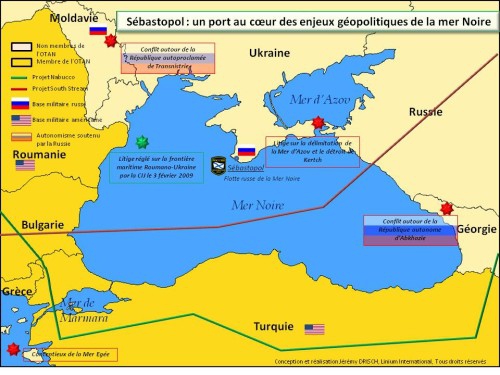


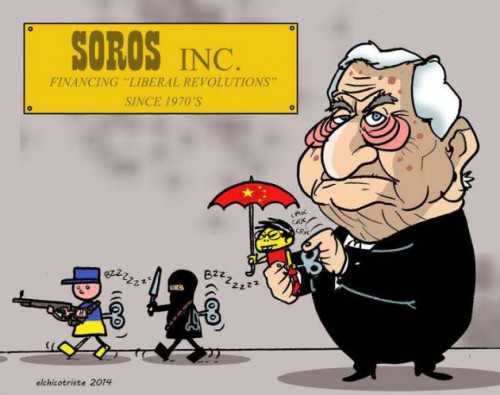



 Third, the attempt to resurrect the conflict in Transnistria fully fits into the US policy of creating problems for Russia wherever possible, forcing Moscow to spread its forces, attention and resources thin on the ground so that it ultimately becomes overstretched and is unable to pursue an independent foreign policy.
Third, the attempt to resurrect the conflict in Transnistria fully fits into the US policy of creating problems for Russia wherever possible, forcing Moscow to spread its forces, attention and resources thin on the ground so that it ultimately becomes overstretched and is unable to pursue an independent foreign policy.






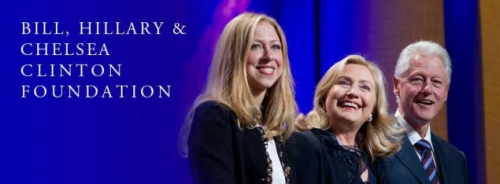

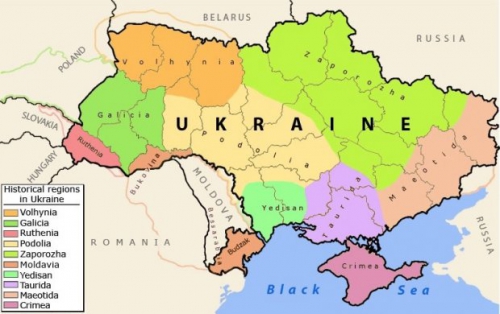
 Ce samedi 14 mars 2015, un congrès rassemblant les principales organisations ruthéniennes s’est fixé pour objectif d’obliger Kiev a admettre les résultats du référendum de 1991, selon lesquels 80% des habitants de l’oblast ont affirmé vouloir un statut autonome pour leur région.
Ce samedi 14 mars 2015, un congrès rassemblant les principales organisations ruthéniennes s’est fixé pour objectif d’obliger Kiev a admettre les résultats du référendum de 1991, selon lesquels 80% des habitants de l’oblast ont affirmé vouloir un statut autonome pour leur région. En Transcarpatie sont apparues des réactions aux pressions provocantes de la part de la junte de Kiev. Il fut affirmé que les habitants de la région resteront là où ils sont. Les Transcarpatiens souhaitent savoir ce que l’Ukraine a réellement fait pour eux afin qu’ils commencent à la considérer comme leur patrie, et plus encore, acceptent de combattre pour elle. C’est l’association patriotique et d’éducation «Kroton» qui, ayant reçu le soutien des compatriotes de la région, a soulevé ces questions dans le cadre d’une déclaration officielle, a annoncé l’agence d’informations karpatnews.in.ua.
En Transcarpatie sont apparues des réactions aux pressions provocantes de la part de la junte de Kiev. Il fut affirmé que les habitants de la région resteront là où ils sont. Les Transcarpatiens souhaitent savoir ce que l’Ukraine a réellement fait pour eux afin qu’ils commencent à la considérer comme leur patrie, et plus encore, acceptent de combattre pour elle. C’est l’association patriotique et d’éducation «Kroton» qui, ayant reçu le soutien des compatriotes de la région, a soulevé ces questions dans le cadre d’une déclaration officielle, a annoncé l’agence d’informations karpatnews.in.ua.
 Les exemples de ce genre sont légion. Le livre très rigoureux du mathématicien français Michel Segal, Ukraine, histoires d’une guerre (éd. Autres Temps), en décompose un certain nombre en détail. Il faut reconnaître que le camp « occidentiste » a l’initiative de la « propagande contre la propagande », c’est-à-dire de la montée en épingle d’opérations d’influence supposées. Il jouit en cela d’une complaisance ahurissante des médias occidentaux. Or, dans un conflit comme celui-là, où tous les protagonistes sortent des écoles de manipulation soviétiques, les chausse-trapes sont partout et seul un jugement fondé sur la sanction des faits avérés et sur la question classique « à qui profite le crime ? » permettrait d’y voir clair. Nous en sommes loin ! Le plus cocasse, c’est que l’officialité nous sert à journée faite des théories du complot russe toujours plus échevelées tout en condamnant le « complotisme » des médias alternatifs …
Les exemples de ce genre sont légion. Le livre très rigoureux du mathématicien français Michel Segal, Ukraine, histoires d’une guerre (éd. Autres Temps), en décompose un certain nombre en détail. Il faut reconnaître que le camp « occidentiste » a l’initiative de la « propagande contre la propagande », c’est-à-dire de la montée en épingle d’opérations d’influence supposées. Il jouit en cela d’une complaisance ahurissante des médias occidentaux. Or, dans un conflit comme celui-là, où tous les protagonistes sortent des écoles de manipulation soviétiques, les chausse-trapes sont partout et seul un jugement fondé sur la sanction des faits avérés et sur la question classique « à qui profite le crime ? » permettrait d’y voir clair. Nous en sommes loin ! Le plus cocasse, c’est que l’officialité nous sert à journée faite des théories du complot russe toujours plus échevelées tout en condamnant le « complotisme » des médias alternatifs …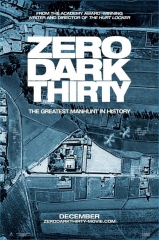 Slobodan Despot : C’est évident. Il se développe en milieu anglo-saxon (et donc partout) une véritable osmose entre l’écriture scénaristique et l’écriture documentaire. Cas extrême : le principal « document » dont nous disposions sur l’exécution supposée de Ben Laden en 2011 est le film de Kathryn Bigelow, Zero Dark Thirty, qui a tacitement occupé dans la culture occidentale la place du divertissement et de l’analyse, et de la preuve. La réussite cinématographique de ce projet (du reste dûment distinguée) a permis d’escamoter toute une série d’interrogations évidentes.
Slobodan Despot : C’est évident. Il se développe en milieu anglo-saxon (et donc partout) une véritable osmose entre l’écriture scénaristique et l’écriture documentaire. Cas extrême : le principal « document » dont nous disposions sur l’exécution supposée de Ben Laden en 2011 est le film de Kathryn Bigelow, Zero Dark Thirty, qui a tacitement occupé dans la culture occidentale la place du divertissement et de l’analyse, et de la preuve. La réussite cinématographique de ce projet (du reste dûment distinguée) a permis d’escamoter toute une série d’interrogations évidentes.



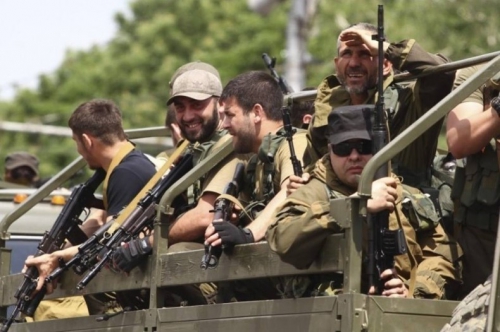



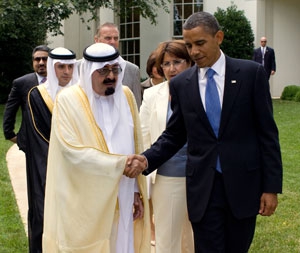 Quand il s’agit d’émettre des garanties militaires et de rédiger des rapports somptueux pour noter les nations, les représentants américains accordent beaucoup d’importance aux valeurs partagées. Personne ne peut se méprendre sur les seuls points communs entre l’Arabie Saoudite et l’Amérique, voir le commerce du pétrole et les ennemis occasionnels tels qu’Oussama Ben Laden.
Quand il s’agit d’émettre des garanties militaires et de rédiger des rapports somptueux pour noter les nations, les représentants américains accordent beaucoup d’importance aux valeurs partagées. Personne ne peut se méprendre sur les seuls points communs entre l’Arabie Saoudite et l’Amérique, voir le commerce du pétrole et les ennemis occasionnels tels qu’Oussama Ben Laden.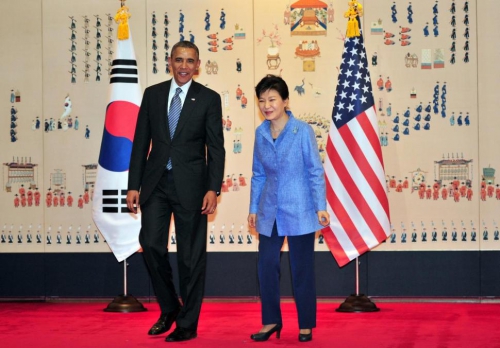

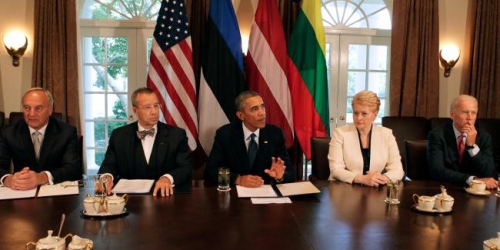


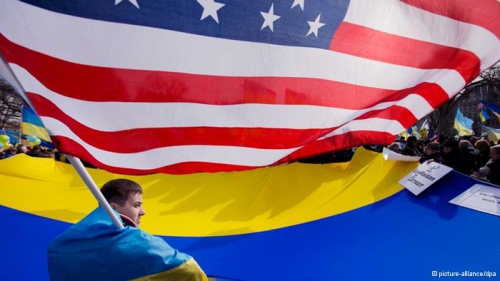

 But it does. Look at Carter administration National Security Advisor Zbigniew Brzezinski’s strategic master plan, laid out in his book
But it does. Look at Carter administration National Security Advisor Zbigniew Brzezinski’s strategic master plan, laid out in his book 



 E. K. Cela a été le point de départ. En 1992, les divers acteurs ont mis en avant certains aspects pour créer une atmosphère favorisant un conflit. Ils ont ensuite légalisé une intervention au nom de l’aide humanitaire. Toute possibilité de paix a été écartée et la Yougoslavie a été démembrée à leur guise, laissant Slobodan Milosevic pour seul responsable. Le Kosovo est un bel exemple de leur mensonge et de leur justice aléatoire. Ils ont soutenu la séparation de cette région au nom du droit des peuples mais la refusent à la Crimée ! Les États-Unis et le camp atlantiste imposent leur vérité car ils se comportent en vainqueurs de la guerre froide. Ils estiment avoir triomphé du marxisme et tué le communisme.
E. K. Cela a été le point de départ. En 1992, les divers acteurs ont mis en avant certains aspects pour créer une atmosphère favorisant un conflit. Ils ont ensuite légalisé une intervention au nom de l’aide humanitaire. Toute possibilité de paix a été écartée et la Yougoslavie a été démembrée à leur guise, laissant Slobodan Milosevic pour seul responsable. Le Kosovo est un bel exemple de leur mensonge et de leur justice aléatoire. Ils ont soutenu la séparation de cette région au nom du droit des peuples mais la refusent à la Crimée ! Les États-Unis et le camp atlantiste imposent leur vérité car ils se comportent en vainqueurs de la guerre froide. Ils estiment avoir triomphé du marxisme et tué le communisme.







